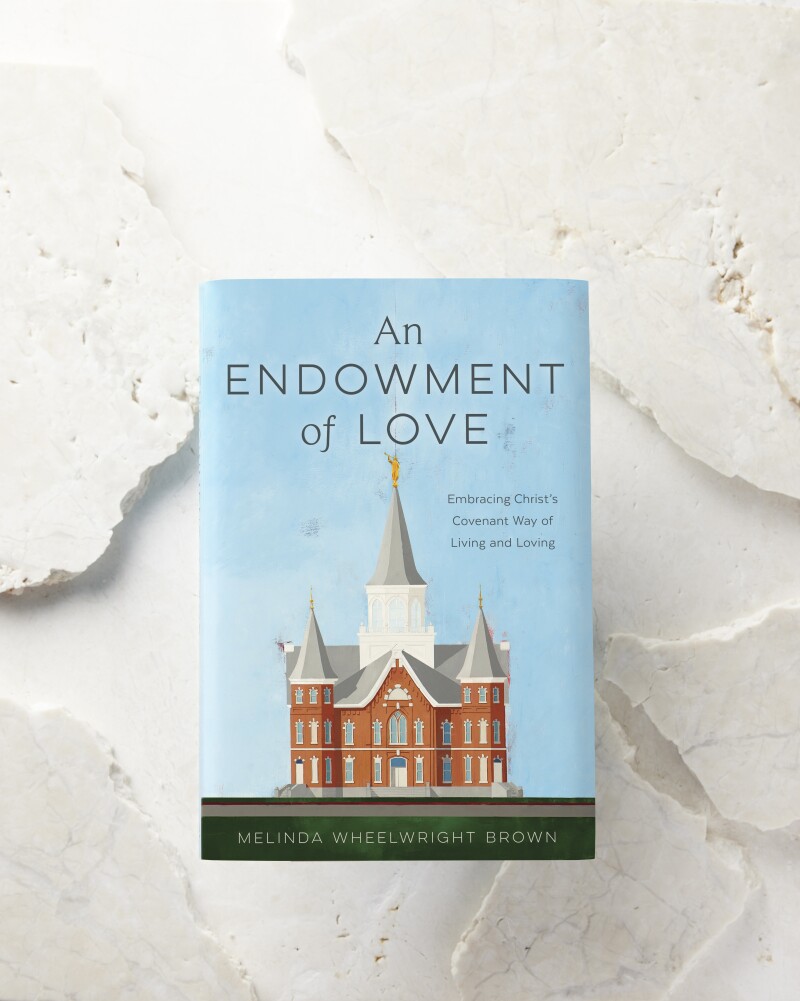One way temple worship works on and shapes us is through a variety of modes of instruction.
Much like the administration of the sacrament each Sunday, the presentation of the temple endowment is an opportunity for personal reflection. As with all ordinances, both use liturgical language, meaning it’s fixed and precise. That predictability allows for deeper contemplation as we become increasingly familiar with the sacred text, but while partaking of the sacrament typically takes a few minutes, participating in the endowment takes over an hour. That longer time frame allows for several divinely designed learning experiences; it uses “every human faculty so that the meaning of the gospel [of Jesus Christ] may be clarified through art, drama, and symbols.”1
Let’s briefly explore three of those experiential approaches: feeling awe, participating in story, and uniting through prayer.
1. Feeling Awe
In the Book of Mormon, after Ammon’s adventures protecting King Lamoni’s flocks, the questioning king asks Ammon to explain the source of his godlike power. Alma 18:36–39 describes Ammon’s inspired approach:
“He began at the creation of the world, and also the creation of Adam, and told him all the things concerning the fall of man.... But this is not all; for he expounded unto them the plan of redemption, which was prepared from the foundation of the world.” The presentation of the endowment follows this same pattern, beginning with “a recital of the most prominent events of the Creation.”2
What a brilliant starting point for transcendent interaction! Gazing up into the cosmos is like instant awe. Every stargazer quickly succumbs to wonder. As ancient philosophers observed over two thousand years ago, “Wonder is the beginning of wisdom,”3 and recent research keeps adding supporting evidence.
That feeling of wonder and awe is often defined by scientists as the sensation that you’re encountering “a vast mystery that transcends your understanding,” and it’s literally felt through our senses—we get goosebumps or chills, it temporarily takes our breath away, and we can’t help but ooh and aah. One Christian educator insightfully describes it as actively experiencing “God’s offer of relationship with the divine.”4
Feeling awe opens our heart and mind. It helps us find our place in the vast beauty of divine design and allows us to see that all life is interrelated, woven together into eternal relationships.5 Feeling awe has been shown to decrease anxiety and stress while instilling a sense of gratitude, fostering generosity, and empowering sacrifice. In fact, researchers note that as few as five minutes of awe each day can put us on “the pathway to our highest happiness.”6
The Lord Himself explained His gracious gift of Creation to the Prophet Joseph Smith, saying the earth in its fulness is “for the benefit and the use of man, both to please the eye and to gladden the heart, ... for taste and for smell, to strengthen the body and to enliven the soul.”7
Pondering Creation is one of the quickest inroads to soulful interaction with Deity. Every bit of Creation bears Christ’s fingerprints.8
But contemplating such awesome wonder can come with some uncomfortable tension. As Elder Dieter F. Uchtdorf put it, “We may look at the vast expanse of the universe and say, ‘What is man in comparison to the glory of creation?’” His answer illustrates the power of awe as a teaching method: “God Himself said we are the reason He created the universe! His work and glory—the purpose for this magnificent universe—is to save and exalt mankind.”
Creation has been God’s great witness since the very beginning! In this act of supreme abundance, our Father in Heaven demonstrates His infinite love for us, His children, “that we might reach our potential as His sons and daughters.” The starting point for the temple endowment is this eternal paradox: “Compared to God, man is nothing; yet we are everything to God.”9
2. Participating in Story
Unlike the typical sacrament meeting talk, the presentation of the endowment invites us into the story of Adam and Eve, by way of guiding us through a metaphorical ascent heavenward. As Jennifer C. Lane explains, this dramatic quest helps us “learn and live a different story, one focused on seeking God’s presence.”10
If you’re lucky enough to be worshiping in one of the pioneer-era temples, such as the Manti Utah Temple, you might actually leave the creation room for the garden room, then move upward a few steps into the world room, and a few more into the terrestrial room, before ultimately arriving in the celestial room.11
But whether you’re physically climbing or not, you’re figuratively traveling alongside our first parents, because their story is our story, and it’s one of the divinely appointed methods for immersing us in Christ’s covenant way of living and loving.
In a sense, Eve and Adam acted as pioneering proxies for each of us, opening the doorway to mortal life. Their brave choice to give up their garden paradise in exchange for the lone and dreary world echoes the decision each of us made premortally to trust the Lord and embrace the educational experience of mortality, a necessary precursor to eternal life with our Heavenly Father.
This relational reenactment is powerful because stories engage our attention and fuel our imagination, drawing us in while allowing for various levels of understanding. It’s one of the reasons Jesus so frequently taught with parables.12 Many ancient cultures recognized the value of interactive narrative drama. The Greeks considered it integral to life, “not a spectator sport but a soul-making force.”13 Though this sort of ritual may feel unusual to us, Greek audiences relished positioning themselves in the center of the play, “literally allowing it to ‘play’ upon them.”14
Similarly, as we rehearse Adam and Eve’s story, we’re offered emotional space to observe and wonder how they received and reflected the atoning love of Jesus Christ while contemplating how we might do likewise. We memorialize their faithful courage by remembering their words and actions in our sacred liturgy and gestures, further strengthening generational ties of loving support by drawing their earnest examples deep into our hearts.
3. Uniting Through Prayer
The third and final mode of instruction we’ll consider here is one most of us are quite familiar with: communal prayer. Many of us grow up praying with our family, holding hands around the dinner table or kneeling around our parents’ bed. We’ve witnessed baby blessings, watching those who love the infant tenderly encircle them. Maybe you’ve been surrounded by concerned brethren with priesthood authority to administer a healing blessing. And perhaps in your heart you cherish the feeling of your mother’s arms embracing you as she pleaded with the Lord for your well-being. We know from personal experience that praying for and with one another is powerful.
A circle of prayer is not new to us, but a temple prayer circle is unique. The house of the Lord is both a “house of prayer” and “a house of order”; within the presentation of the endowment, each worship element has a precise place and meaningful purpose. In that sacred setting, prior to approaching the veil, “participants, an equal number of men and women dressed in temple clothing, surround an altar in a circle formation to participate unitedly in prayer,”15 coming together to “unite their faith in behalf of those individuals” whose names have been placed on the temple prayer roll.16 The physically interactive nature of this sacred feature of temple worship might remind us of the Savior’s instructions: “If thou bring thy gift to the altar, and there rememberest that thy brother hath ought against thee; leave there thy gift before the altar, ... and go ... be reconciled to thy brother, and then come and offer thy gift” (Matthew 5:23–24). Modern prophets reiterate the Savior’s directions, as well.
Elder Ulisses Soares noted that our covenant relationships require that “if we want the Spirit of the Lord to be unrestrained in our lives, we simply cannot and must not have unkind feelings toward anyone.”17 And issuing repeated calls to “end the conflicts” in our lives, President Nelson pleadingly asked, “Could there be a more fitting act of gratitude to Jesus Christ for His Atonement?”18 Temple worship nurtures our commitment to love the Lord and love one another.
Since it is ultimately the Spirit who works on us as we worship, reconciling with one another (in imitation of Christ’s atoning love for each of us) allows the Spirit unlimited access to our hearts—the only way we can receive the “fulness of the Holy Ghost” we have been promised (Doctrine and Covenants 109:15).
Editor’s note: A longer version of this article first appeared in the May/June issue of LDS Living magazine.
A Fresh Perspective on the Temple
More articles for you:
▶ Ask yourself this question to feel more prepared for the Second Coming
▶The best thing parents can send with their missionary
▶This might be the best thing to tell someone before they receive their endowment
Notes
1. Alma P. Burton, “Endowment,” Encyclopedia of Mormonism.
2. Burton, “Endowment.”
3. This statement is commonly attributed to Socrates and is expressed in Plato’s Phaedrus.
4. Fred P. Edie, “The Formative Power of Awe: Pedagogies of Worship and Wonder,” in How Youth Ministry Can Change
Theological Education—If We Let It, eds. Kenda Creasy Dean and Christy Lang Hearlson (Wm. B. Eerdmans Publishing Co., 2016).
5. Dacher Keltner, Awe: The New Science of Everyday Wonder and How It Can Transform Your Life (Penguin Press, 2023), xix, 243–245.
6. Keltner, Awe, 198.
7. Doctrine and Covenants 59:16–19; see also Job 12:7–10; Alma 30:44.
8. John 1:3.
9. Dieter F. Uchtdorf, “You Matter to Him,” Ensign, November 2011; emphasis added.
10. Jennifer C. Lane, Let’s Talk About Temples and Ritual, 7.
11. See more photos of these art-filled rooms at www.deseret.com/faith/2024/03/11/manti-utah-temple-renovation-includes-preservedminverva-teichert-murals.
12. Mark 4:33–34.
13. Parker J. Palmer, To Know as We Are Known: Education as a Spiritual Journey (Harper & Row, 1983), 23, emphasis added.
14. Palmer, 23.
15. As the Encyclopedia of Mormonism describes, the prayer circle is “a distinctive ceremony, integrally connected with temple worship, . . . usually associated with the Endowment ceremony.” See George S. Tate, “Prayer Circle,” Encyclopedia of Mormonism, eom.byu.edu.
16. “Temple Prayer Roll Submission,” www.churchofjesuschrist.org/tools/ temple-prayer-roll-submission.
17. Ulisses Soares, “Covenant Confidence through Jesus Christ,” Liahona, May 2024.
18. Russell M. Nelson, “The Power of Spiritual Momentum,” Liahona, May 2022.



